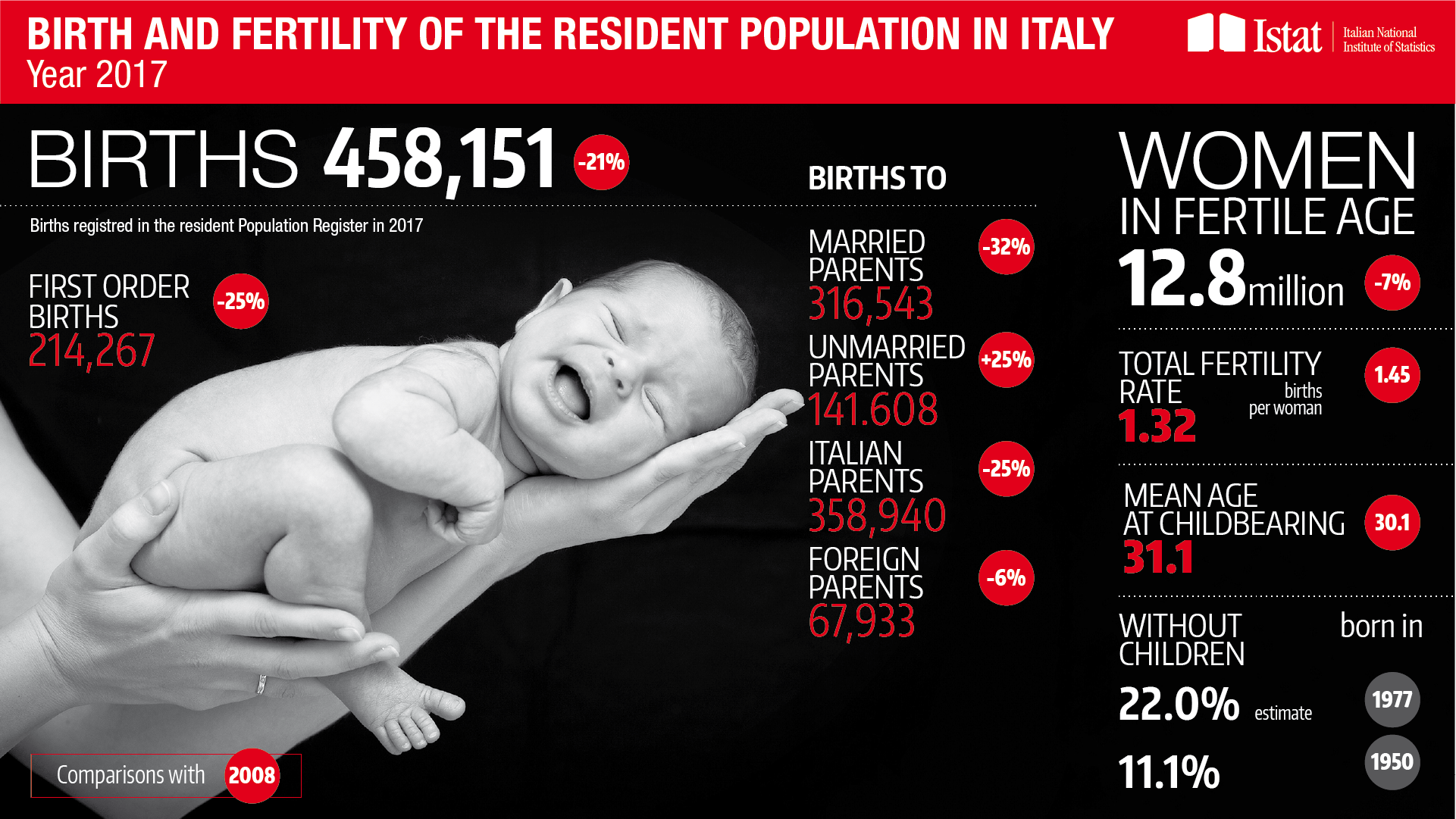Press release
- Home
- /
- Press release
- /
- Birth and fertility
Birth and fertility
In 2017, 458,151 births were registered in the Resident Population Register (-15 thousand births over the previous year). The figures confirmed the downward trend that began in recent years: 120 thousand births less compared with 2008.
In 2017, women of child-bearing age were about 12.8 millions (-900 thousand compared with 2008). The observed birth difference between 2008 and 2017 was attributable for almost three-fourths to the change in women’s age structure, and for the remaining part to a decreasing fertility.
The recent decline in birth mainly resulted from the reduction of children born to Italian parents, equal to 358,940 births in 2017 (-121 thousand in nine years).
The decline in births was due to declining births to married parents: 316,543 in 2017, compared with 147,000 in 2008. This major decline was partly due to the recent sharp drop in weddings, that reached the lowest level in 2014 (189,765 weddings; -57,000 compared with 2008).
In 2015 and in 2016 marriages increased again compared with the previous year (+4,612 and +9,000 respectively), but in 2017 a new descrease was observed (191,287 marriages compared with 200,000 in 2016).
In 2017, almost 70% of births occurred inside the marriage: the link between nuptiality and births in our country continues to be strong. Nevertheless, the number of births outside marriage continued to increase, reaching 141,608 births in 2017 (30,9%).
The decrease of births was characterized by a stronger reduction of births of the first order, from 283,922 in 2008 to 214,267 in 2017 (-25% compared with -17% of higher order births).
The number of births with at least one foreign parent decreased slightly from 2012 (-8 thousand units) to just 99.211 (21.7% of the total), for the first time under 100 thousand. In 2017 the more relevant decrease was registered for babies born to foreign parents (67.933).
In 2017, Romanian (14,693), Moroccans (9,261), Albanians (7,273) and Chinese (3,869) accounted for 51.8% of total foreign births in Italy.
Since 2010, the fertility decline has always been underway. In 2017, the average number of children per woman fell to 1.32, compared with 1.46 in 2010. The total fertility rate was 1.24 children for Italian women and 1.98 for the foreign ones: a significant decrease compared with seven year before, when the average number of children was 1.34 for italian women and 2.43for foreign women.
The reduction in the average number of first children per woman between 2010 and 2017 was responsible for 68% of the overall drop in fertility of Italian women and for 81% of that of foreign women.
Looking at generations, the average number of children per woman decreased from 2.5 with regards to women born in early 1920s (immediately after the Great War), to 2 children with regards to women of the post-war generations (1945-49), to the estimated level of 1.44 children for women born in 1977.
Over the same considered period there was a relevant increase in the proportion of child-free women: 11.1% for the 1950 generation, 13% for the 1960 generation and 22% for the 1977 generation (at the end of the cycle of reproductive life – estimate).
The name counter
How many children born and registered at the Italian Registry Office in a year have the same name? Istat’s name counter will help you find an answer to these questions.

